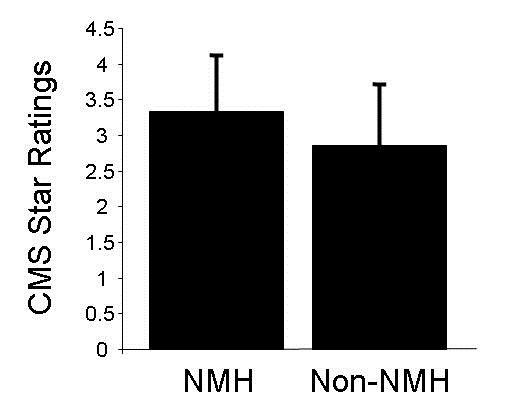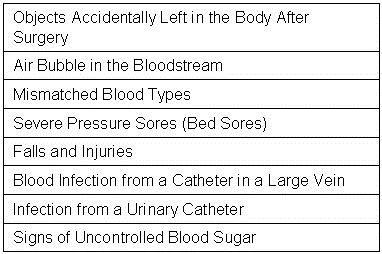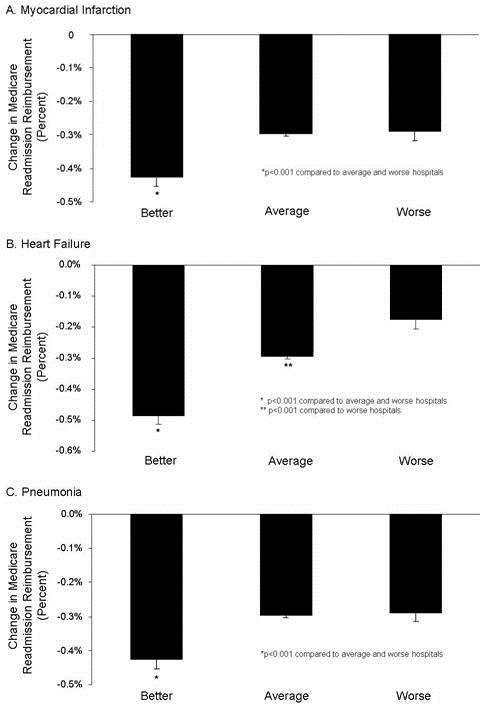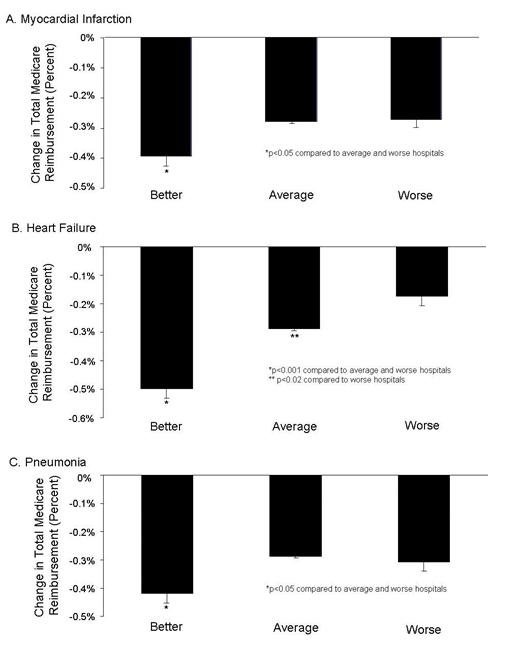Who Are the Medically Poor and Who Will Care for Them?
 Thursday, December 5, 2019 at 8:00AM
Thursday, December 5, 2019 at 8:00AM Richard A. Robbins, MD
Phoenix Pulmonary and Critical Care Research and Education Foundation
Gilbert, AZ USA
Introduction
A fundamental healthcare question has been raised in the ongoing Presidential political debates-who will provide healthcare for the poor? Some are advocating “Medicare for All” while others offer other solutions. Regardless, it appears that no one is providing adequate healthcare at the moment. Go back about 60 years and there were a number of excellent public hospitals-Bellevue in New York, Cook County in Chicago, LA County in Los Angeles, Grady in Atlanta, and the aptly named Charity in New Orleans to name a few. Most were affiliated with medical schools and staffed by the medical school staff, residents and students. The poor generally received good care in those hospitals. It has long been known that academically affiliated hospitals have the best outcomes which was recently confirmed by a study from Burke et al. (1).
However, there has been some suggestion that these public (charity) hospitals might not be providing the best care to everyone. Sporadic reports have been received of patients being unable to get their breast cancer resected, not being worked up for cancer, and unable to get expensive medications, such as monoclonal antibodies for immunotherapy. This is due to lack of insurance, or denial by the insurance company or inability to afford co-payments or deductibles. What do these patients have in common? -they are un- or under-insured, or in other words, medically poor. Apparently, the “hyperfinancializaton” of healthcare has resulted in patients with no or too little insurance unable to receive life-sustaining and appropriate care, even at a public hospital. Government was the answer in the past. Most of the large charity hospitals were locally or state funded, but with the introduction of Medicare and Medicaid in the early 1960’s, the responsibility shifted toward the Federal government. Local financial support waned as the Federal support increased (2).
The Underinsured
Of the 194 million U.S. adults ages 19 to 64, an estimated 87 million, or 45 percent, are inadequately insured (3). This is based on a definition of underinsured if the patient’s:
- out-of-pocket costs, excluding premiums, over the prior 12 months are equal to 10 percent or more of household income; or
- out-of-pocket costs, excluding premiums, over the prior 12 months are equal to 5 percent or more of household income for individuals living under 200 percent of the federal poverty level ($24,120 for an individual or $49,200 for a family of four); or
- deductible medical costs constitute 5 percent or more of household income.
This is truly a staggering number. Given that 12% of the population is uninsured, the 45% underinsured means that over half of the population is inadequately insured during their prime working years. They can only receive the care that they can pay for, or in other words, minimal care.
Trends
One result of the Affordable Care Act has been a decline in the Nation’s uninsured. The percentage of uninsured has fallen from 20% in 2010 to 12% in 2018 (3). There have also been shorter gaps in patients’ coverage when they lose their insurance (3). However, the bad news is that more patients are underinsured. Of people who were insured continuously throughout 2018, an estimated 44 million were underinsured because of high out-of-pocket costs and deductibles. This is up from an estimated 29 million in 2010. One group likely to be underinsured is not surprisingly people who buy plans on their own through the individual market including the marketplaces. However, the greatest growth in the number of underinsured adults over this 2010-2018 period has occurred among those in employer health plans (3). These plans are increasingly shifting costs to the insured often resulting in ridiculous high deductibles or other ruses to shift costs.
Who Are the Medically Poor?
Those that cannot pay their medical bills are the medically poor. Hospital costs are notoriously hard to nail down. However, in 2005 the average cost of 2 days in the intensive care unit (ICU) in the US was $44,505 (4). Bills for prolonged illnesses could easily reach several hundred thousand dollars. Most of us rely on insurance to pay for these costs but even a percentage of the copayments may be extraordinarily high. What if the insurance decides not to pay for some reason such as the hospital is out of network, the doctors are out of network, or some other often nebulous reason? Jeff Bezos and Bill Gates are probably safe, however, what about the rest of us? In a controversial article, Sen. Elizabeth Warren and coauthors point out that medical costs significantly contribute to 60% of bankruptcies (5,6).
Personally, our family would have difficulty paying several hundred thousand dollars. We lately had a taste of this when a family member was scheduled to have a parotid tumor removed. After assuring us that the operation was covered by our insurance, the hospital where the scheduled surgery was to take place demanded $14,000 up front on the day of the operation. Fortunately, this was an elective surgery, and we were able to cancel the operation and reschedule at another hospital where the procedure was actually covered. But what if the operation was an emergency? Our family would have had little choice but to pay the money up front and then potentially be on the hook for hundreds of thousands of dollars.
Rural and Safety Net Hospitals
Recently, ProPublica ran a series on medical debt in the small rural town of Coffeyville, Kansas (7). The once bustling industrial center has suffered the plight of so many rural towns with a deteriorating economic base, declining population and a poverty rate more than double the national average. ProPublica points out that Coffeyville has a medical debt collection system where the judge has no law degree, debt collectors get a cut of the debt collection, and the medically poor can potentially be imprisoned for failing to pay their medical debts. This is probably not what community leaders envisioned when they founded the Coffeyville Regional Medical Center in 1949 and charged it with the mission “…to serve our patients and families with the highest quality healthcare”.
The ProPublica article also points out the other side of the story. The local hospital has $1.5 million in uncollected debt and the local ambulance service operates at a loss of over $300,000 per year. Most of the other small-town hospitals and ambulance services surrounding Coffeyville have closed. Nevertheless, the hospital seemed to be handling these losses until the Centers for Medicare and Medicaid Services (CMS) cut the hospital’s reimbursement by $1.4 million or about the same as the hospital’s bad debt (8). A majority of the cuts the Coffeyville Regional Medical Center come from the Trump’s administration cancellation of the Low-volume Adjustment Program for Rural Hospitals. This resulted in the hospital cutting about 30 positions mostly through attrition.
Coffeyville is not the only town with a medical center facing financial hardship. Many of the large urban medical centers mentioned earlier are “safety-net hospitals” and have also been under increasing financial pressure (9). Unfortunately, reimbursement from the Federal government has been inconsistent and payment has been difficult to predict under shifting economic and political forces.
Hyperfinancializaton
There was a time when certain aspects of society were not expected to make a profit including schools, utilities, and hospitals. It was realized that each fulfilled a special societal need. Hospitals and schools operate as not-for-profit, tax-exempt entities because of their commitment to educate and care for the public. Here in Arizona the electric companies are under the auspices of the Arizona Corporation Commission who sets their rates. However, under increasing pressure from declining tax revenues, many governments have shifted the cost burden of education, electrical power and healthcare to the private sector. With privatization comes the problem that some customers without the resources to pay are “left out in the cold”. Nowhere has that been more obvious than in Arizona. Public schools struggle while public funds are rechanneled to private charter schools; universities raise tuition and close programs because they are not profitable; private utilities shut off air conditioning when the temperature is over 100° F; and sadly, hospitals deny needed care because neither they or the patient can afford it. Public hospitals who do not deal effectively with these fiscal realities face the very real prospect of going out of business.
Summary
We must ask ourselves who will pay for the care of the poor and other basic services if not government? The private sector has apparently not been the solution and blaming inefficient bureaucrats has become an over-used cliché that obscures the basic problem of lack of funding (10). Governments and hospitals are caught with insufficient resources to provide basic healthcare services. In healthcare, a profit-driven private sector has resulted in marked price increases and pays attention to the poor only when a third-party payer reimburses the cost of care. Regardless of the specifics, the last 50 years have demonstrated that any solution that does not involve adequate government funding will not meet the goal of caring for all. However, a tax base allowing sufficient resources needs to be established. Government was the solution in the past and will need to be solution in the future.
References
- Burke L, Khullar D, Orav EJ, Zheng J, Frakt A, Jha AK. Do academic medical centers disproportionately benefit the sickest patients? Health Aff (Millwood). 2018 Jun;37(6):864-872. [CrossRef] [PubMed]
- Gibson RM, Waldo DR. National health expenditures, 1980. Health Care Financing Review. September 1981. Available at: https://www.cms.gov/Research-Statistics-Data-and Systems/Research/HealthCareFinancingReview/Downloads/CMS1191799DL.pdf (accessed 10/26/19).
- Collins SR, Bhupal HK, Doty MM. Health insurance coverage eight years after the ACA-fewer uninsured Americans and shorter coverage gaps, but more underinsured. Commonwealth Fund. February 7, 2019. Available at: https://www.commonwealthfund.org/publications/issue-briefs/2019/feb/health-insurance-coverage-eight-years-after-aca (accessed 10-26-19).
- Dasta JF, McLaughlin TP, Mody SH, Piech CT. Daily cost of an intensive care unit day: the contribution of mechanical ventilation. Crit Care Med. 2005 Jun;33(6):1266-71. [CrossRef] [PubMed]
- Himmelstein DU, Warren E, Thorne D, Woolhandler S. Illness and injury as contributors to bankruptcy. Health Aff (Millwood). 2005 Jan-Jun;Suppl Web Exclusives:W5-63-W5-73. [CrossRef] [PubMed]
- Himmelstein DU, Thorne D, Warren E, Woolhandler S. Medical bankruptcy in the United States, 2007: results of a national study. Am J Med. 2009 Aug;122(8):741-6. [CrossRef] [PubMed]
- Presser L. When medical debt collectors decide who gets arrested. Propbulica. October 16, 2019. Available at: https://features.propublica.org/medical-debt/when-medical-debt-collectors-decide-who-gets-arrested-coffeyville-kansas/ (accessed 10/26/19).
- William A. Hospital faces $1.4 million in reimbursement cuts. The Independence Daily Reporter. January 13, 2018. Available at: https://indydailyreporter.com/Content/News/News/Article/Hospital-faces-1-4-million-in-reimbursement-cuts/1/98/27613 (accessed 10/26/19).
- Popescu I Fingar KR, Cutler E, Guo J, Jiang HJ. Comparison of 3 safety-net hospital definitions and association with hospital characteristics. JAMA Netw Open. 2019 Aug 2;2(8):e198577.[CrossRef] [PubMed]
- Milward H, Rainey H. Don't Blame the Bureaucracy! Journal of Public Policy. 1983;3(2):149168. [CrossRef]
Cite as: Robbins RA. Who are the medically poor and who will care for them? Southwest J Pulm Crit Care. 2019;19(6):158-62. doi: https://doi.org/10.13175/swjpcc069-19 PDF






